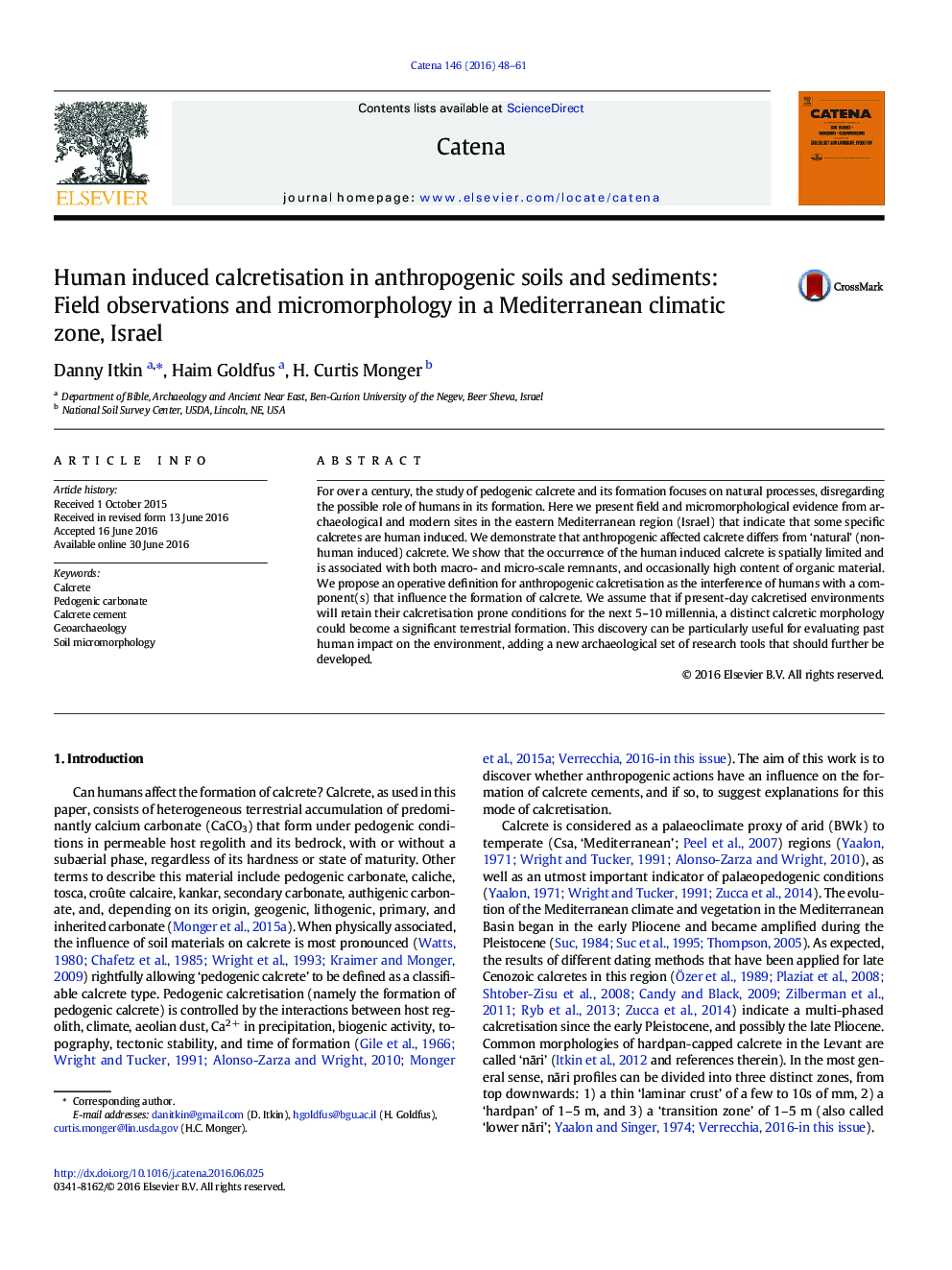| Article ID | Journal | Published Year | Pages | File Type |
|---|---|---|---|---|
| 4570864 | CATENA | 2016 | 14 Pages |
•The formations of calcrete is currently being considered only as natural process.•Anthropogenic actions can enhance the formation of calcrete.•Human induced calcretisation is assumed to have long-term legacy effects on the landscape.•The study of human induced calcretisation adds novelty to the interdisciplinary bond between geoarchaeology and pedology.
For over a century, the study of pedogenic calcrete and its formation focuses on natural processes, disregarding the possible role of humans in its formation. Here we present field and micromorphological evidence from archaeological and modern sites in the eastern Mediterranean region (Israel) that indicate that some specific calcretes are human induced. We demonstrate that anthropogenic affected calcrete differs from ‘natural’ (non-human induced) calcrete. We show that the occurrence of the human induced calcrete is spatially limited and is associated with both macro- and micro-scale remnants, and occasionally high content of organic material. We propose an operative definition for anthropogenic calcretisation as the interference of humans with a component(s) that influence the formation of calcrete. We assume that if present-day calcretised environments will retain their calcretisation prone conditions for the next 5–10 millennia, a distinct calcretic morphology could become a significant terrestrial formation. This discovery can be particularly useful for evaluating past human impact on the environment, adding a new archaeological set of research tools that should further be developed.
